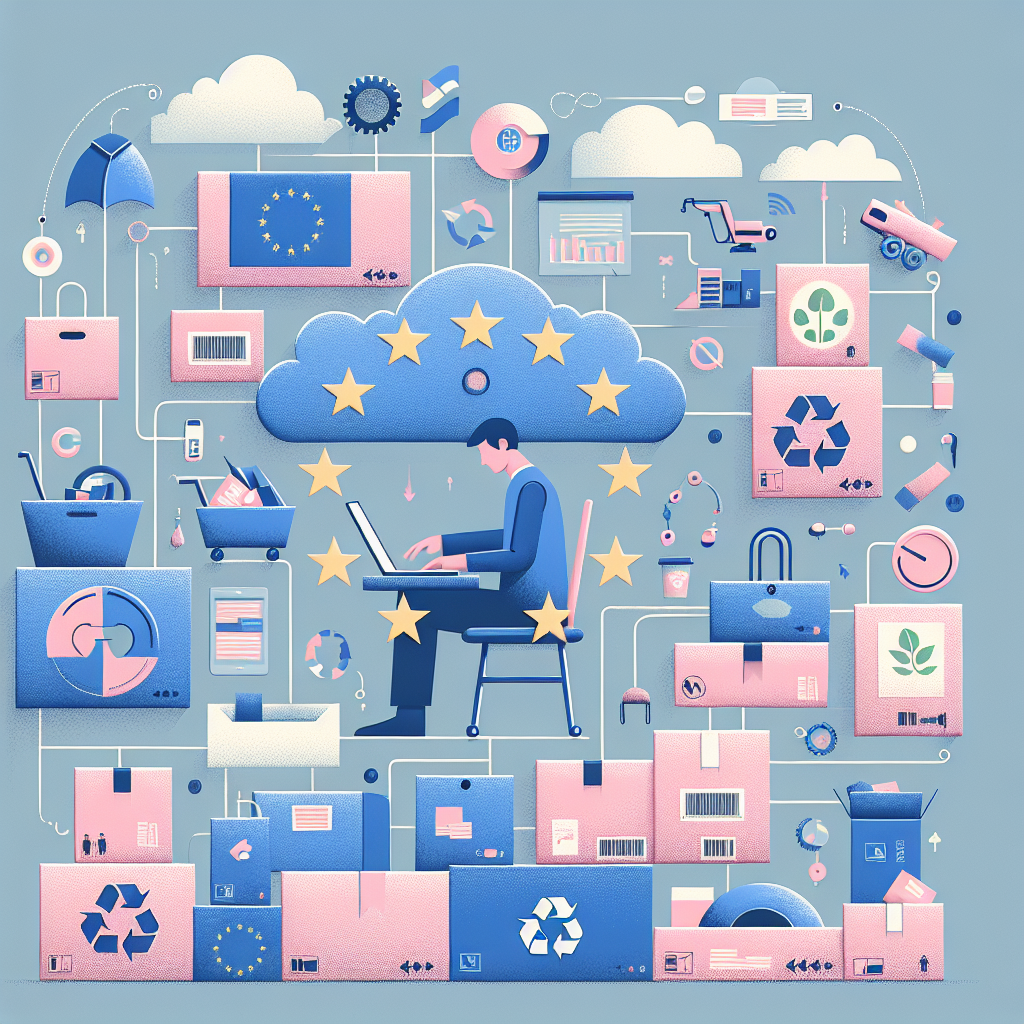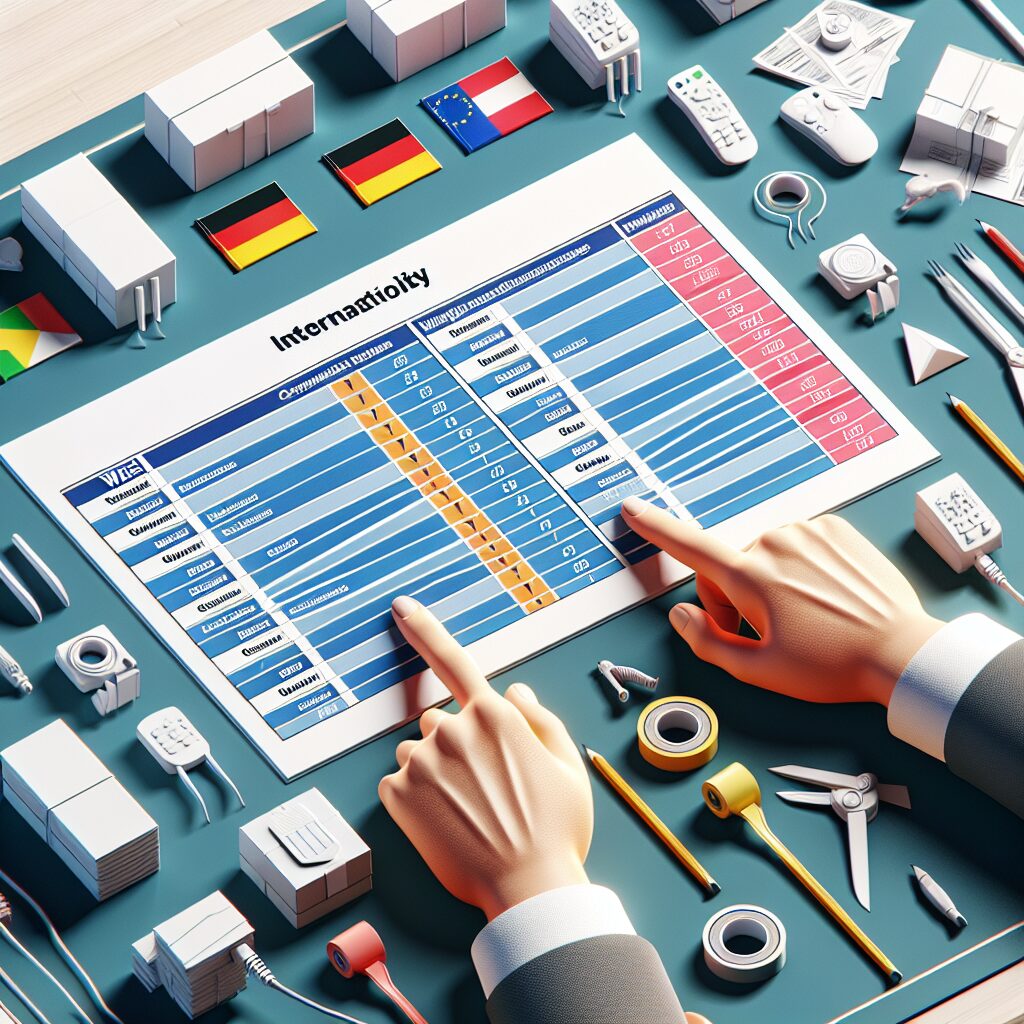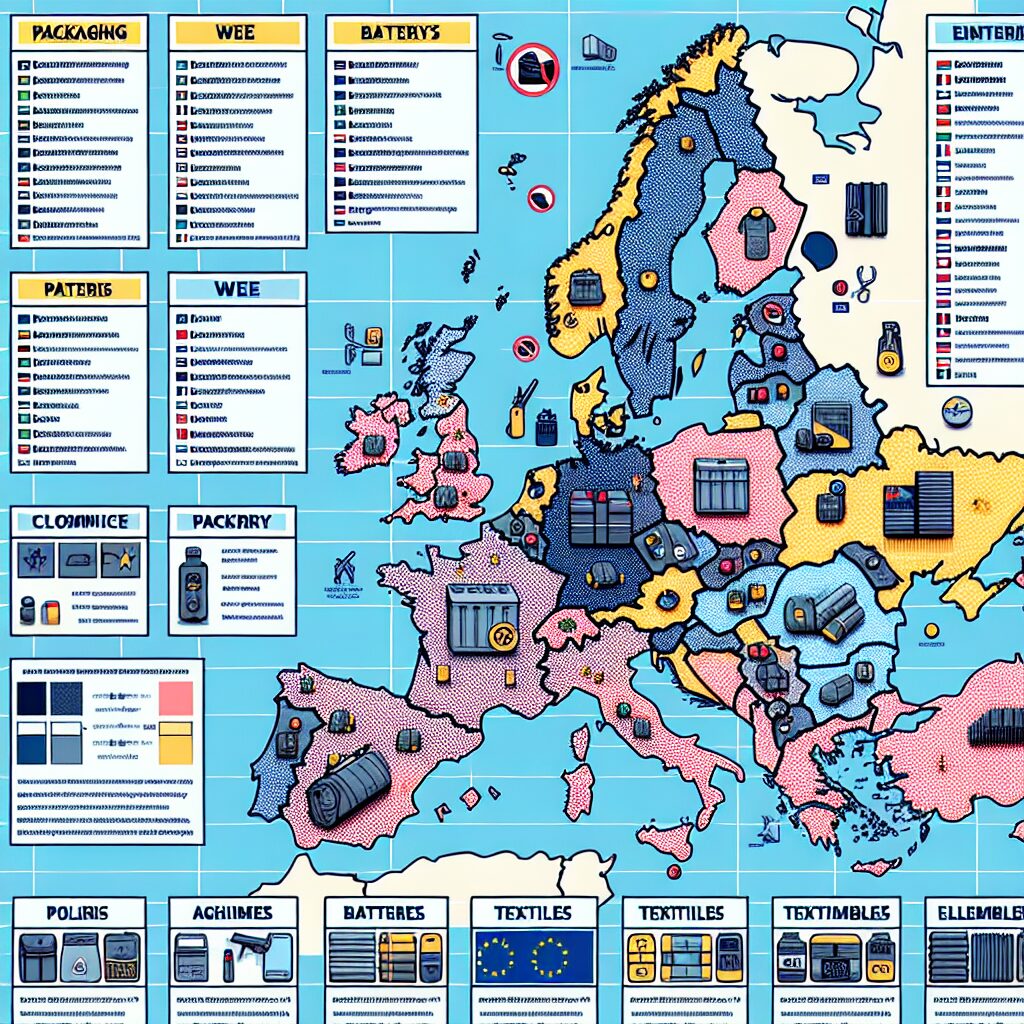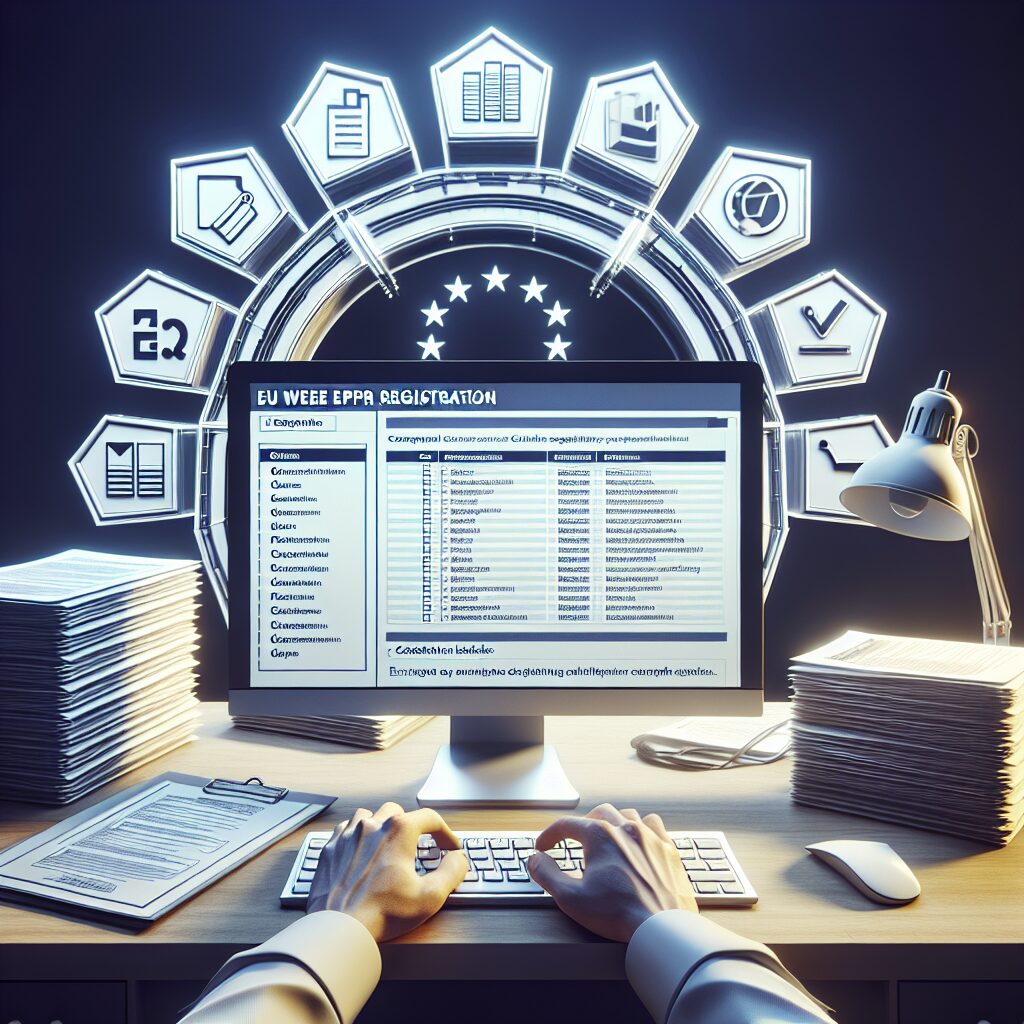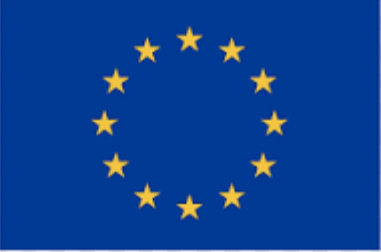About eldris
epr.eldris.ai leads the EPR sector, in fast, automated, AI Agent EU Complaince. LUCID Packaging, WEEE, and Battery Compliance for Brands, E-Commerce and Service based businesses expanding into the EU.
In This Article
- EPR Reporting Automation simplifies multi-country packaging compliance for EU sellers.
- Manual reporting is error-prone and time-intensive, increasing regulatory risk.
- Tools like Eldris AI standardise data, validate reports, and integrate with ecommerce platforms.
- Automation enables proactive compliance with emerging EU legislation and sustainability goals.
- Learn more about EU Packaging Compliance to learn how to implement EPR-compliant workflows.
- Discover Read a related article for case studies on automation success.
- Get external guidance at Expand with Eldris-driven compliance automation for national EPR rules.
Why EPR Reporting Is Crucial for EU Sellers
Understanding Extended Producer Responsibility
EPR Reporting Automation is transforming how businesses adhere to complex packaging legislation in the EU. At its core, Extended Producer Responsibility (EPR) is an environmental policy approach where producers—typically importers, brand owners, or manufacturers—are required to take full responsibility for the treatment or disposal of post-consumer products. Specifically for packaging, this means financing and managing the recycling or disposal processes for the materials they introduce to market.
As more nations introduce and tighten EPR frameworks to align with the European Green Deal and horizon goals for a circular economy, companies selling across national borders must comply with each country’s distinct, and often inconsistent, requirements. These regulations are not optional; non-compliance can result in steep penalties, blocked sales, and reputational damage. With sustainability now central to procurement policies and consumer expectations, reporting accurately and consistently is simply a non-negotiable component of EU market access.
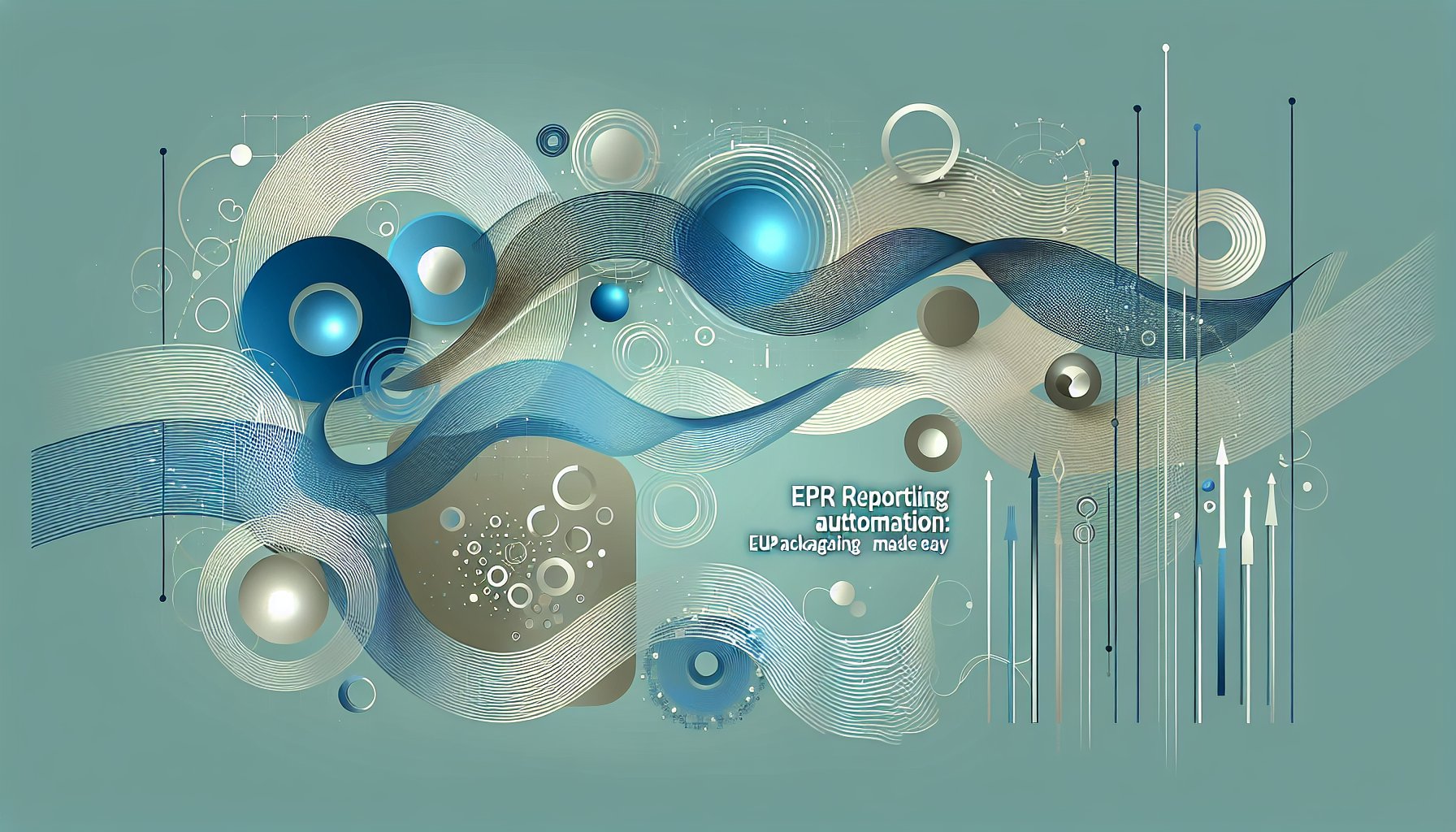
The Manual Burden of Compliance
Challenges with Traditional EPR Reporting
For many EU sellers, managing EPR reporting remains a largely manual effort. Data must first be collected from various upstream and downstream touchpoints—often involving multiple marketplaces, warehousing facilities, and logistic providers. Each unit of packaging material, from cardboard boxes and polybags to bubble wrap and thermal labels, must be weighed, categorised, and attributed according to local classifications.
Add to that the fact that each EU member state enforces its own variant of EPR legislation, with distinctive reporting frequencies, data formats, and producer responsibility organisations (PROs). This forces compliance teams to replicate efforts country-by-country, collate disparate spreadsheets, and navigate language barriers as they complete detailed declarations, often under tight deadlines. It’s not uncommon for even diligent teams to make errors or submit incomplete reports, resulting in compliance gaps.
“Manually managing packaging data for EPR compliance across several EU countries took over 40 hours per month for our mid-sized team. Automation helped us cut that time by 75%.”
Introducing Automation to Packaging Data Reporting
EPR Reporting Automation represents a fundamental breakthrough for businesses operating across Europe’s regulatory patchwork. Instead of relying on spreadsheets, manual entry, and scattered communications with PROs, automation connects the full lifecycle of data—from where it’s generated to where it must be reported. Through AI-powered tools, this process becomes systematised, error-resistant, and significantly faster.
Critically, these solutions are not one-size-fits-all. They are engineered to interpret and align with each EU country’s rules, ensuring that packaging types, materials, weights, and formats conform precisely to national regulations. By implementing automation, sellers no longer need to worry about duplications, unit conversion errors, or inconsistent sourcing.
How Eldris AI Simplifies EPR Compliance
Eldris AI is at the forefront of EPR Reporting Automation for EU sellers. Unlike generalised reporting tools, Eldris is built with native support for EPR compliance regulations in all EU member states, including the latest amendments in countries like France, Germany, and Italy. Using machine learning and data mapping intelligence, Eldris instantly processes packaging inputs from your sales and logistics channels.
From there, it classifies these inputs correctly against local rules, fills out the required compliance templates, and manages submissions to each jurisdiction’s authorised producer responsibility organisation. This saves hours of spreadsheet labour and dramatically reduces the risks of costly oversights. Moreover, Eldris comes with built-in version tracking, so every declaration is audit-ready at any moment.
Aggregating Packaging Data Across Channels
One of the most time-consuming elements of manual EPR reporting is data consolidation. Sellers operating across platforms—such as Amazon, eBay, Shopify, and regional marketplaces—must pull packaging details from multiple fulfilment service partners. Eldris AI eliminates this bottleneck entirely through intelligent API connections and cloud-based integrations. Whether your data resides in ERP tools, WMS databases or CSV exports, Eldris ingests and standardises it into compliant format structures.
This aggregation not only ensures that no packaging material is overlooked but also delivers insights across your product lines. Sellers can identify which markets are generating the largest amounts of non-recyclable packaging, assess cost liabilities across PROs, and even simulate future packaging strategies for better sustainability reporting. Automated data transformation means business leaders have visibility, not just compliance.
Country-by-Country Compliance Mapping
A key strength of EPR Reporting Automation tools like Eldris is their ability to generate country-specific reports from a centralised dataset. Because each EU country has its own permissible packaging codes, weight thresholds, and submission processes, reporting errors are common when done manually. Eldris leverages a live, continuously-updated compliance rules engine to map your packaging inventory onto national requirements.
This means your packaging types will conform exactly to the codes and categories accepted in, for example, France’s CITEO registry, Germany’s Zentrale Stelle Verpackungsregister, or Spain’s Ecoembes system—with zero manual translation or formatting. Additionally, Eldris will flag discrepancies, highlight regulation changes, and notify users of upcoming submission deadlines, reducing compliance risk at scale.
Real-Time Validation and Error Reduction
Nothing is more frustrating than submitting a report, only to have it rejected or sent back for correction due to anomalies that could have been flagged earlier. Eldris AI brings smart validation checkpoints into each step of the reporting workflow. From duplicate weight entries to missing material types, the platform automatically audits each report before submission and alerts users with error descriptions and recommended fixes.
What used to take hours of quality control now happens in real-time. This not only means higher reliability but also faster submission cycles, which is crucial when managing quarterly or annual declarations for multiple jurisdictions. In addition, Eldris stores historical validation logs, so auditors or internal teams can trace every correction and verify ongoing data quality controls.
Integrating Seller Platforms with Compliance Tools
EPR Reporting Automation is only valuable when it works seamlessly across your operational environment. That’s why Eldris offers deep native integrations with leading ecommerce, logistics, and data platforms. Whether you’re using Shopify, Linnworks, or SAP, Eldris embeds as a modular extension onto your existing tech stack without requiring infrastructure overhauls.
Integration also brings about operational synchronisation. For example, if you change your fulfilment partner or update your packaging type, Eldris reflects that change across all relevant markets automatically. This minimises the need for human updates across multiple systems and ensures that all packaging data reported remains consistent with what’s actually been shipped.
Benefits of Automated EU Reporting
Implementing EPR Reporting Automation provides measurable benefits across several dimensions. First and foremost, there are significant time and cost savings. Reducing the reporting workload by up to 80% frees up team resources and improves overall operational efficiency.
Secondly, accuracy improves dramatically. By eliminating manual collection and classification tasks, error rates drop significantly. Sellers who use Eldris report up to a 95% reduction in compliance-related rejections.
In addition, this automation empowers broader environmental governance. Businesses may use the data Eldris aggregates to support ESG reporting and fulfil audit requirements under sustainability certification schemes.
Finally, the use of intelligent automation sets businesses apart in a crowded marketplace. Demonstrable compliance and active environmental responsibility are becoming procurement differentiators. Companies that can’t report their packaging impact accurately may lose out to more transparent competitors.
Future Trends in EPR Law and Reporting Requirements
The future of packaging compliance is one of heightened scrutiny and standardisation. The EU is actively working toward unified EPR frameworks under legislation such as the Circular Economy Action Plan and the revision of the EU Packaging and Packaging Waste Directive. Automation tools will play a central role in helping businesses adapt promptly.
We can expect increased enforcement power for national authorities, shorter compliance reporting timeframes, and mandatory digital tracking systems. Additionally, EPR regulations will likely expand into adjacent categories such as textiles, electronics, and food packaging. Businesses that build scalable, adaptable reporting infrastructure today will be far better positioned tomorrow.
Moreover, as artificial intelligence becomes more embedded into regulatory tech, sellers may benefit from predictive compliance—where their own systems alert them about upcoming rule changes or suggest alternative packaging strategies to lower environmental tariffs.
Conclusion: Why Now Is the Time to Automate
EPR Reporting Automation is no longer optional—it is becoming a strategic necessity for EU sellers. With complex and evolving regulations across multiple jurisdictions, relying on manual processes exposes businesses to inaccuracies, inefficiencies, and compliance risks. Automation tools like Eldris bring clarity, speed, and scalability to EPR reporting, enabling sellers to operate confidently across Europe’s intricate regulatory environment.
As sustainability expectations, legal requirements, and operational complexities increase, investing in automation delivers long-term cost savings and reputational advantages. By taking action today, sellers can ensure future-readiness, contribute meaningfully to environmental goals, and maintain access to the EU’s lucrative but tightly regulated marketplaces.
Great guide on how-it-works-packaging-epr-reporting-automation-for-eu-sellers – Community Feedback
How does EPR work in Europe?
Extended Producer Responsibility (EPR) in Europe requires producers and online retailers to ensure their products are recycled or properly disposed of at the end of their lifecycle. This covers categories like electrical devices, batteries, and, crucially, packaging materials. Sellers must comply with each country’s specific EPR requirements.
What does EPR mean in packaging?
EPR for packaging means producers and sellers must collect, report, and ensure proper recycling or disposal of packaging waste. This includes providing detailed packaging data and following country-specific reporting guidelines.
What is the EU revision of the packaging and packaging waste directive?
The EU Packaging and Packaging Waste Directive (PPWD) revision aims for all packaging to be reusable or recyclable by 2030, aligning with the European Green Deal and circular economy objectives.
Which countries have EPR for packaging?
All EU member states, along with Norway, Switzerland, Turkey, and several others, have implemented EPR for packaging. Requirements differ across countries.


